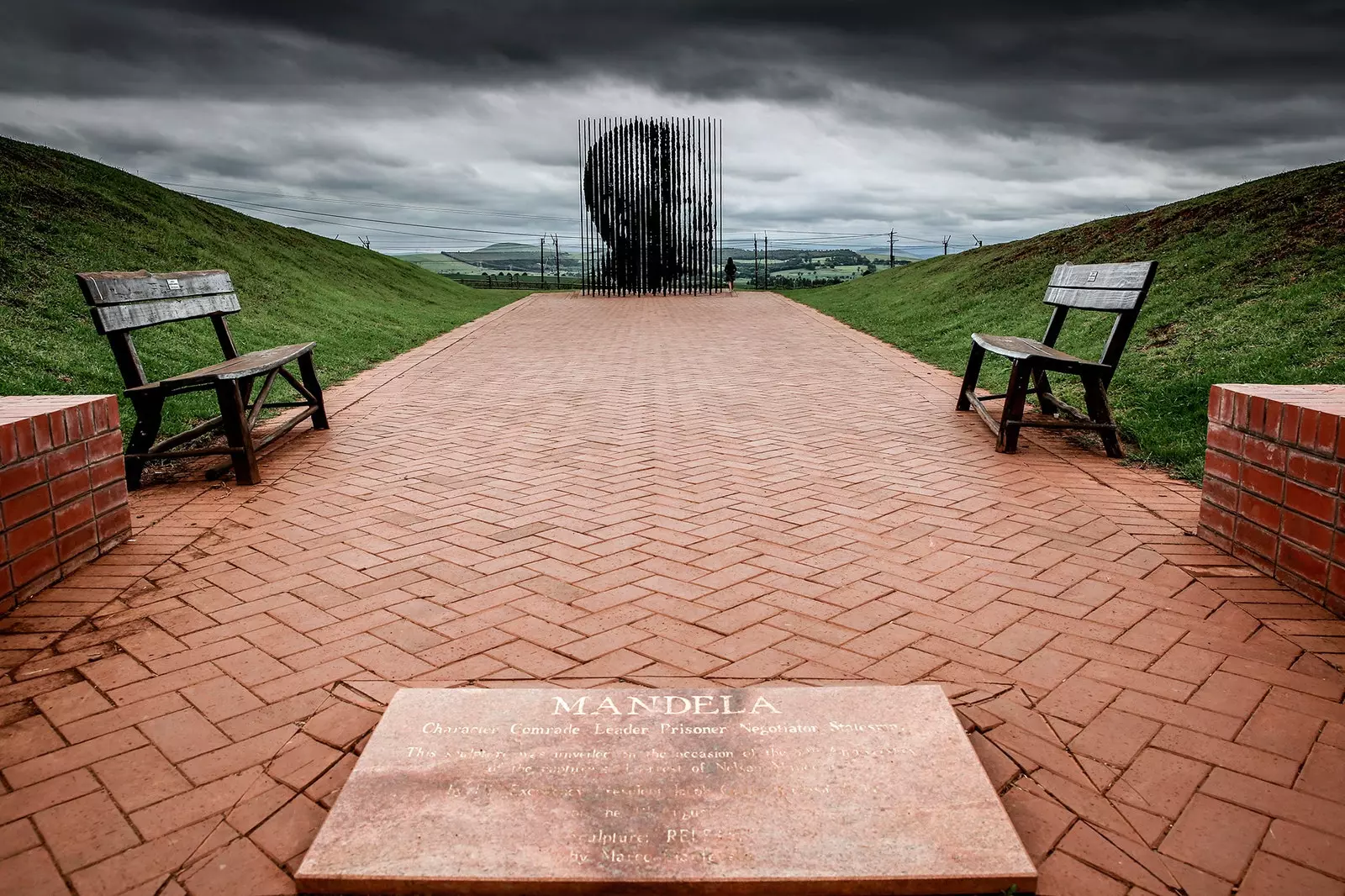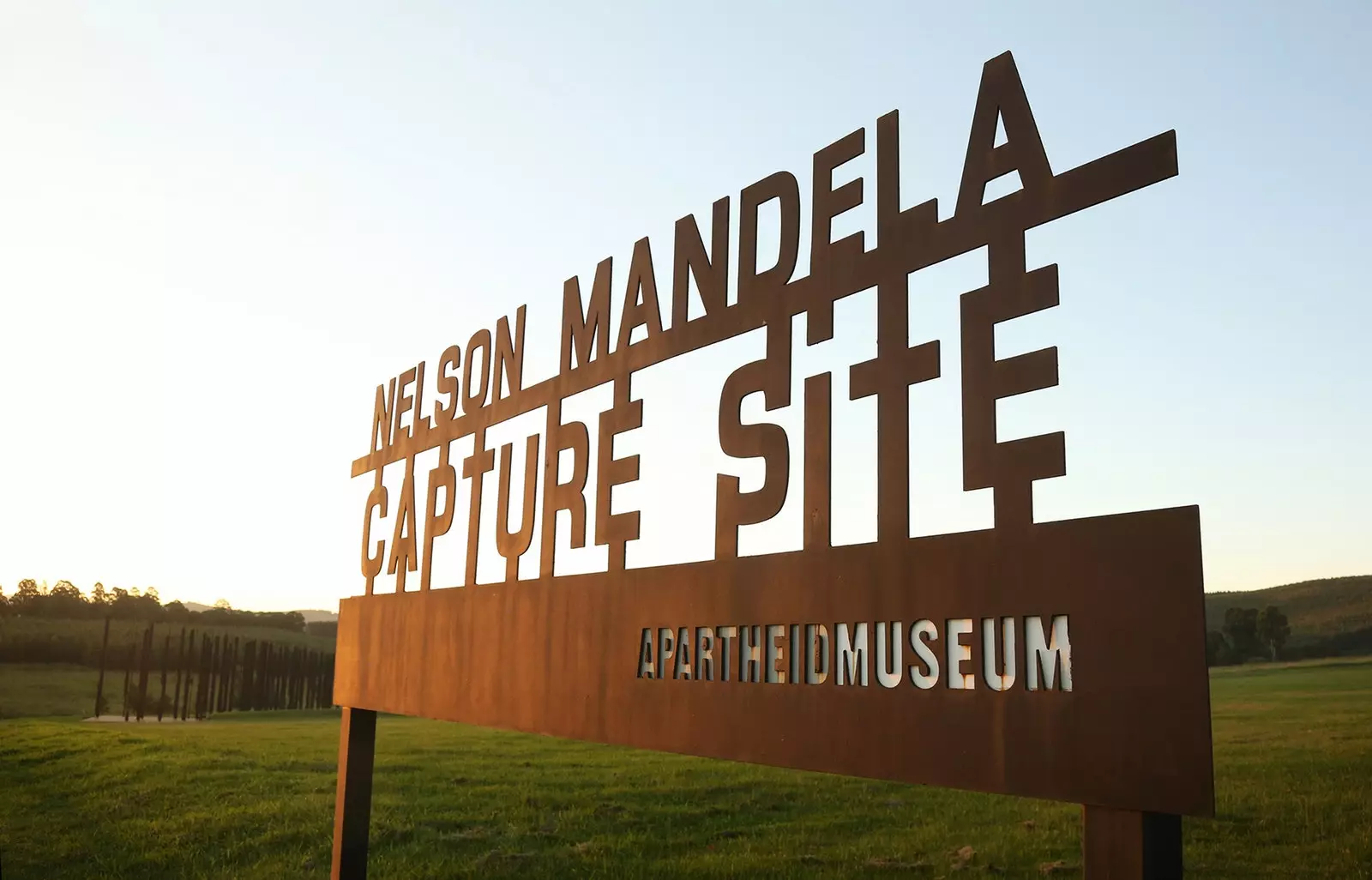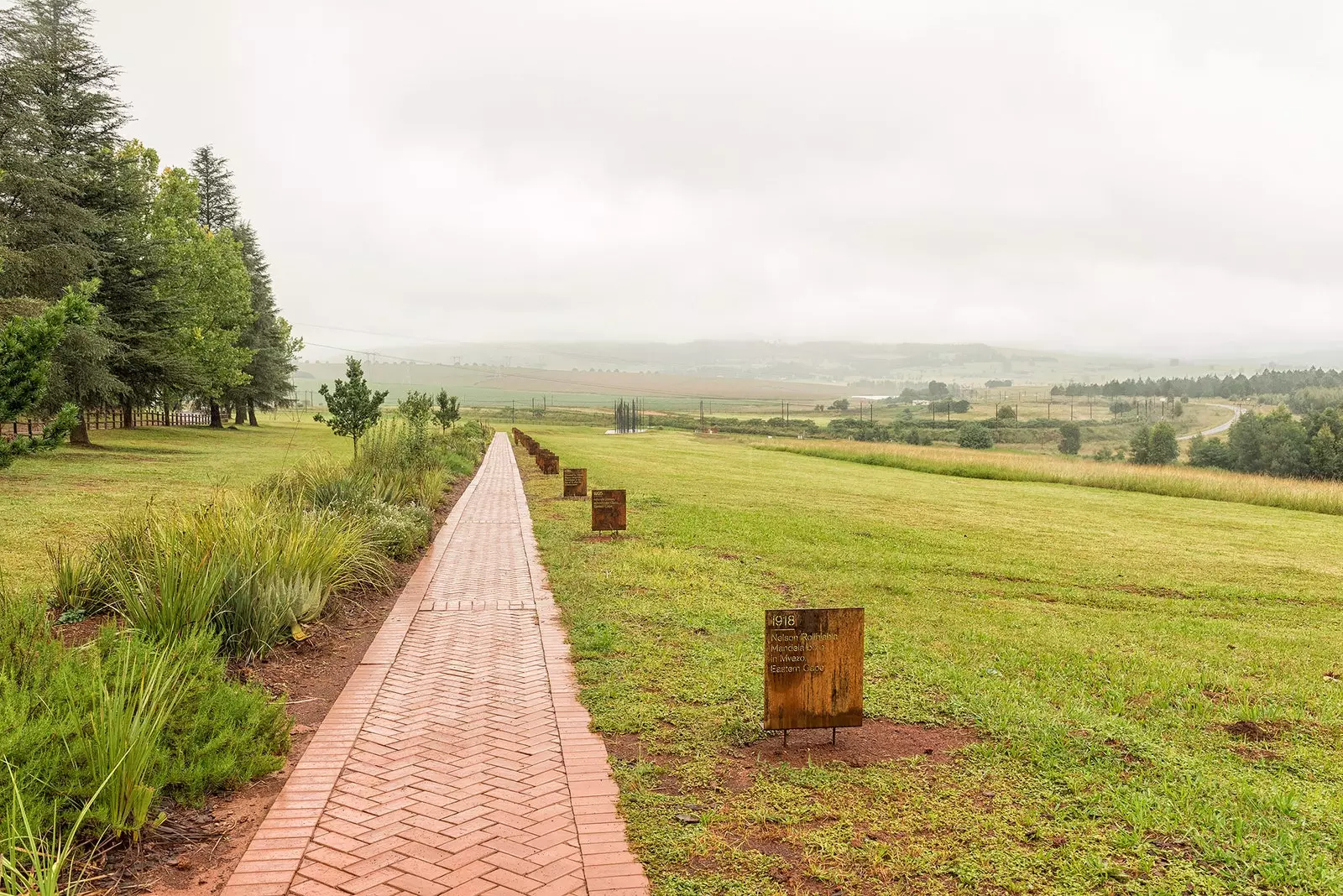
'Release', the work of South African artist Marco Cianfanelli
No matter what the goal is when you take a trip to South Africa it is about: sooner or later it will be talked about. Because his name will always, always be present.
And it is that Nelson Mandela it was not alone an icon in the fight for freedom and in defense of the rights of the black South African minority. He was also a determined activist against apartheid, a unique negotiator, a prisoner, a statesman, a Nobel Peace Prize laureate and, ultimately, one of the most influential characters of the 21st century.
In other words: Mandela was a born leader who marked a before and after in the history of South Africa, yes, but also in the history of the world. No doubt.

This interpretation center has been built on the exact spot where Nelson Mandela was arrested on August 5, 1962
That is why it is normal that when one visits any of the many places scattered around his native country related to his own life story —which, by the way, are not few—, feel something special inside.
It is what happens to us as we move through the R-301, the same road marked by green valleys in KwaZulu Natal province for which Mandela traveled that August 5, 1962 when he was about to go from Durban - where he had held a clandestine meeting with the leader of the African National Congress, Albert Lutulhi - to Johannesburg. At the height of little town of Howick, something happened.
He would never reach his destination.
CAPTURE SITE: THE KEY POINT
Today, a brand new —and modern— visitors Center baptized as Capture Site, pays homage to the figure of the much loved Madiba in the same place where that winter of 1962 he said goodbye to his freedom.
It's been a long time since Mandela was targeted by the South African government for his rapprochement with an incipient communist movement that both inside and outside the country was viewed with some suspicion. Because of his outspoken activism he had been forced to live in hiding, fleeing at all times from the apartheid police who were on his trail.
Next to him, in the old Austin in which he was traveling when several cars cut him off and the dreaded arrest took place, was also Cecil Williams, one of his most active companions in the anti-apartheid struggle.
The story from the moment of his arrest is well known: Mandela would be transferred to prison accused of inciting workers to strike and leaving the country without permission. A year later, after the call Rivonia Process which took place in the Supreme Court of Pretoria, were added four charges of sabotage in addition to conspiracy to try to overthrow the Government. finally it was sentenced to life in prison and transferred to Robben Island Prison.
He was finally imprisoned for 27 years, although he never stopped fighting.
A WALK THROUGH HISTORY
When we finally reached the tipping point the outskirts of Howick, We parked the car and entered the visitor center facilities determined to know every detail of those events that, in this corner of the world, claim their historical importance. And we are not the only ones: This hidden and small museum used to host, until the arrival of Covid-19, around 500 daily visits and multiple school excursions who participated in educational programs.
Until December 2019, those who came here met a couple of industrial buildings that served as a commemorative point. Inside, the occasional information panel and Old photographs narrated the most important events in Mandela's life.
The current center, which depends on the Apartheid Museum in Johannesburg, surprises: It has been a revolution in terms of content, but also in terms of form.
And it has been because it has inside it a very interesting immersive exhibition that goes through a short documentary in 360 degrees; continues with a dazzling display of historical artifacts, objects and photographs related to the great Mandela and includes something as curious as a stunning replica of that mythical Austin Westminster in which Madiba was traveling on the day of his arrest.
To support the visit and contextualize the difficult situation that black South Africans were experiencing at that time, The center also has an exhibition that focuses on how the fighting in this area of KwaZulu Natal developed in the early 20th century. One of those was the Bambathade Rebellion of 1906, which subsequently involved decades of resistance to colonial rule and apartheid, culminating in mass mobilization in the 1980s.
In other words, visiting the Capture Site not only brings us a little closer to Mandela, but also it becomes the perfect gateway to research and understand the history of the province and his contribution to the freedom of all South Africans. At this time, due to the health crisis situation caused by Covid-19, the center is closed, but they have created a virtual tour.
LONG WALK TO FREEDOM: NOW YES
Diving through so much data and archive material ends once we go outside again to end the visit in the best way: surprising us. And the best is yet to come. Next to the imposing visitor center building starts a small path known as Long Walk to Freedom: it is the "long road to freedom" inspired by the title that Mandela himself used to baptize his autobiography the one who leads us.
We advance through it meeting, along the way and every few meters, a panel with relevant information related to his story. In total, 27: one for each year that the great leader spent in prison.
But it is at the end of the route, when a small gap is overcome and from about 30 meters away, when the iconic work of South African artist Marco Cianfanelli makes an appearance and we are speechless: It is Release, a peculiar portrait of Madiba himself made from 50 carbon-colored steel columns that have been laser cut and reach 10 meters in height. All of them are strategically arranged to represent his face and symbolize his imprisonment.

Along the Long Walk To Freedom we find panels with relevant information related to the life of Mandela
The path continues until reaching the columns themselves, among which we walk trying to internalize that it was here that the history of the great Madiba changed its course. Because it was here that he cemented his status as a wrestling icon. . Where everyone understood that resistance was the only way.
It was here that Mandela became a hero willing to write the future of South Africa, the one that would cook for 27 years behind bars and would turn him, after his release in 1990 and after democratic elections with massive participation, into the first black president in the country's history.
It was clear: change had finally come. It's time to hit the road.
